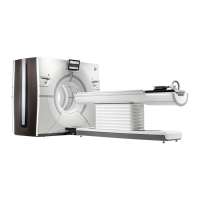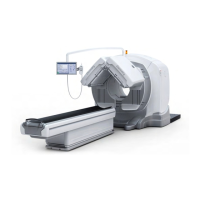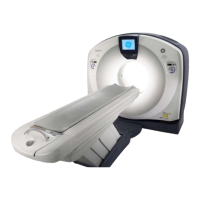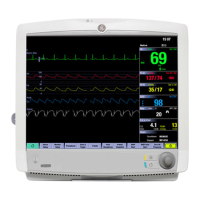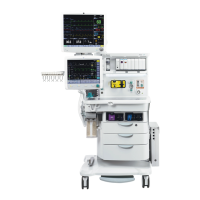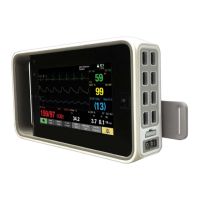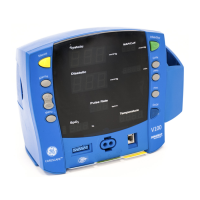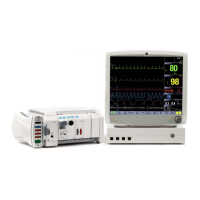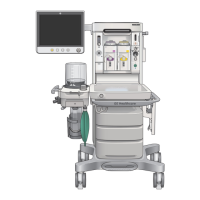GE MEDICAL SYSTEMS CT 9800 QUICK SYSTEM
Rev. 19 Direction 18000
6-9A-3
NOTE: There is no radial adjustment of the tube or collimator. This dimension is adjusted by rocking
the detector.
The tube unit is adjustable in the theta and the Z dimensions.
The collimator is adjustable only in the theta dimension.
The detector is adjustable in the Z and radial dimensions.
4. Illustration 6-9-2 is a schematic of the gantry components at 0° theta when viewed from the table and the
right side of the gantry. The fan beam is nominally 2.16” off the collimator mounting surface and 1.805” off
the detector mounting surface.
5. For proper alignment, the following conditions must be achieved:
• To maintain uniform slice thickness across the reconstruction circle, the plane of rotation of the X-Ray fan
beam must be parallel with the plane of gantry rotation.
A system where the fan beam is not perpendicular to the gantry axis rotation will tend to exhibit cut off at
the sides of the beam in the Z direction and as a result, high standard deviation of both reference and
active channels.
• For maximum sampling at the center of reconstruction, the focal spot must be aligned 1/4 channel above
the “geometric center” of the detector. In the case of HiLight, the geometric center of the detector is
373.5 channels. Adding the 1/4 channel displacement, results in 373.75 channels.
If the center of the detector is aligned to the focal spot, through the gantry isocenter, this detector will
see identical information on reciprocal views. The 1/4 channel y doubles the information sampling in the
center of the image.
• The entire width of the fan beam at the detector must fall within the active area of the detector window in
order to meet H.H.S. requirements.
9A-2 Adjustment Of Components For X-Ray Alignment
This subsection describes how the tube, detector, and collimator are physically positioned in the gantry. Also
described is the pre-positioning of a component when it is replaced.
1. X-Ray Tube Unit
Refer to Illustration 6-9A-3. An aluminum Tube support casting with a Z positioning lever is furnished as part
of the tube unit. Pins in this casting engage in slots in an intermediate steel plate to allow tube movement in
the Z direction.
The steel plate, in turn, rides in a transverse or theta machined groove in the front casting of the gantry
rotating structure. The plate is held in theta position by a threaded rod with a differential screw. A bracket is
located near the steel plate to which a dial indicator may be secured for measurement of tube theta shift. A
second bracket is located on the collimator assembly for attachment of a dial indicator to measure tube Z
shift.
Clearance holes in the steel plate and the tube support casting allow adjustment in both theta and Z
directions. The tube is held in place by two steel clamp plates and four studs with hex nuts.

